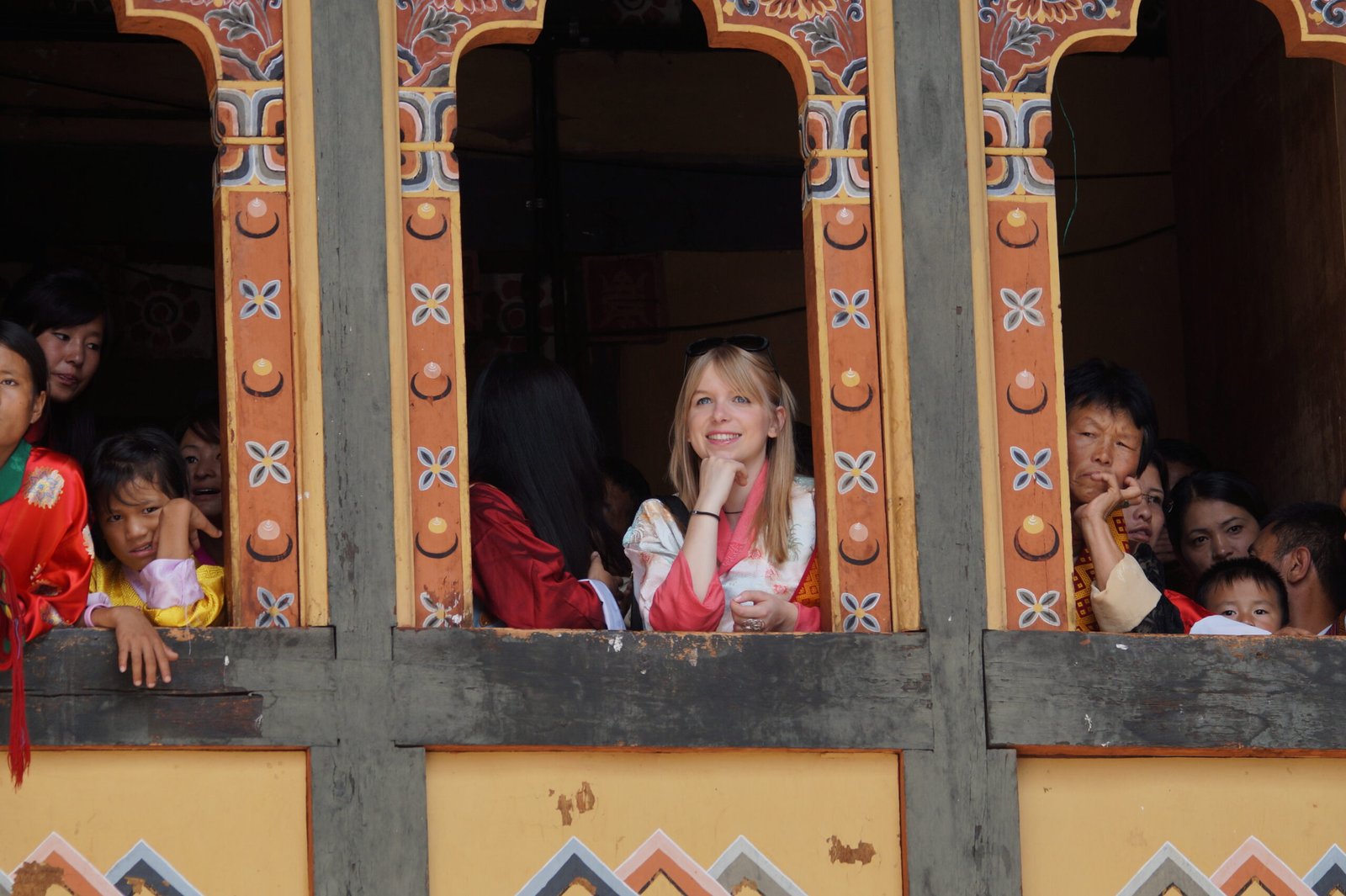CENTRAL BHUTAN
Central Bhutan mainly comprise of three Districts – Trongsa, Bumthang and Zhemgang.
Trongsa- meaning the New Village in local dialect of Mangde community was named after the visit by of othe Great Buddhist saints called Ngagi Wangchuk. He established a small meditation hermit in 1543 where the inner chapel or seat of the of the guardian deity- Palden Lhamo is constructed.
Later in 1647 the first Governor (Trongsa Poenlop) Choegyal Mijur Tempa appointed by Zhabdrung Ngawang Namgyel built the Dzong with close resemblance and amalgamation of Dzongs of Trashigang, Lhuentse, Mongar from the Eastern Bhutan.
Historically, Trongsa is one of the most important districts that functioned as headquarter for eastern region and has been the seat of Trongsa Penlop. Even today, the formal investiture of the crown Prince of Bhutan as the Trongsa Penlop is observed in this Dzong before ascending to the Golden Throne of the King of Bhutan.
Trongsa District is located in the heart of the country covering the area of about 1807 km², with elevation ranging from 800 meters to 4,800 meters above sea level. It has the population of about 15562. Trongsa shares boundaries with Bumthang to the northeast, Wangdi Phodrang to the west and Zhemgang Districts to the south.
The district town lies in the East-West highway of Thimphu and Trashigang and also the road that leads to Sarpang and Zhamgang districts in the South.
The district has very rich biodiversity suitable for bird watching, wildlife photography many endangered and rare flora and fauna.
Jigme Singye Wangchuck National Park that covers an area of 1723 km² is situated there which is a home for the most globally endangered species, Golden Langur and many other species apart from rich culture and traditions. The Monpa the earliest habitants reside on the lower parts of the Jigme Singye Wangchuck National Park.
Bumthang district is situated in the North Central part of Bhutan. It has the population of more than 17800 in the area of 2667.76 km². Bumthang is known to be one of the best and beautiful places and nicknamed it as the Switzerland of Bhutan. The region has many historical and religious sites that dates back to 6th Century still remaining connected through many fascinating festivals.
Zhemgang district lies in the South Central part of Bhutan sharing the borders with Bumthang in the north and Trongsa and Sarpang to the west, Mongar and Pemagatshel to the east and the Indian state of Assam in the south.
The Royal Manas National Park, Jigme Singye Wangchuck National Park and Phrumsengla National Park all three fall under Zhemgang district.
The district has incredible biodiversity comprising hundreds of rare animal and plant species such as Golden Langurs, Royal Bengal Tiger and the Asian One-horned Rhinoceros that cannot be seen anywhere else in the world. The park is the most biologically diverse protected area in the kingdom as well as one of the most outstanding nature reserves worldwide.
The Jigme Singye Wangchuck National Park alone has the record of highest number of 391 bird species and known to be the birds’ paradise amidst the main habitat for other key species like tiger, red panda, golden langur, rufous necked hornbill, white bellied heron, musk deer.
Zhemgang district has the population of 17,763 in the area of 2421.74 km².
CULTURAL TOUR

Bhutan is of the top and exceptional travel destinations in the world because of its unique, rich cultural heritage and unspoiled natural beauty with pristine environment despite the rapid industrializations. Bhutan offers visitors a unique opportunity to experience the ancient traditions, vibrant festivals, and stunning landscapes.
Bhutan captivates travelers with charm and authenticity glorified by the iconic Tiger’s Nest monastery, crafting an unforgettable experiences for those who seek adventure and cultural immersions.
The culture of Bhutan is deeply rooted in Buddhism, which influences every aspect of life in the country. Bhutanese culture is characterized by its traditional architecture, intricate crafts, and colorful festivals that are celebrated throughout the year.

One of the most significant aspects of Bhutanese culture is its festivals, known as Tshechus. These festivals are held in various monasteries and dzongs across the country and are a vibrant display of traditional dance, music, and religious rituals. The Tshechus are not only a time for religious devotion but also a time for social gatherings, where people from all walks of life come together to celebrate and seek blessings.
The colorful festivals in Bhutan are a reflection of the country’s cultural richness and diversity. The dances performed during the Tshechus are not only visually stunning but also carry deep symbolic meanings, often depicting stories from Buddhist mythology and folklore. The festival attire, adorned with intricate patterns and vibrant colors, adds to the festive atmosphere, creating a visual spectacle for both locals and visitors.

In addition to the Tshechus, Bhutan also celebrates various other colorful festivals such as the annual Paro Tsechu, Thimphu Tsechu, Punkha Dromche, Jampa Lhakhang Autumn Festivals, Haa Summer Festival, and many more in other districts and regions, each offering a unique insight into Bhutanese culture and traditions. These festivals serve as a reminder of the country’s strong sense of identity and its commitment to preserving its cultural heritage amidst a rapidly changing world.
Bhutan’s culture and colorful festivals not only provide a glimpse into the country’s rich history but also offer a unique opportunity for visitors to immerse themselves in the vibrant traditions and beliefs of the Bhutanese people. These festivals are a testament to Bhutan’s unwavering dedication to maintaining its cultural legacy while embracing modernity.

